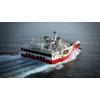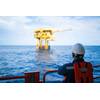DNV GL Initiative Aims to Cut Well P&A Costs
Plugging and abandonment (P&A) of offshore wells represents the highest cost within field decommissioning for operating companies and national authorities. DNV GL has now issued a new, globally applicable Recommended Practice (RP), on risk-based abandonment of offshore wells which in combination with optimized project execution and new technology could potentially reduce P&A costs by 30–50%. The framework outlined in the RP provides the possibility for individualized, fit-for purpose well abandonment designs, a contrast to the prescriptive methodology available in the industry today.
Well abandonment is driven by economic decisions, when the production of an oil or gas reservoir ceases or is no longer profitable. Authorities require that well operators perform safe and environmentally friendly operations by establishing a permanent barrier to prevent release of hydrocarbons to the surface. Traditional P&A methods are time consuming, costly and have remained unchanged despite technological advances in the industry.
“The costs related to well P&A are enormous. Using current practices, there will be a global fleet of dozens of full-time drilling rigs needed to perform P&A for generations to come. We believe the time has come to tackle this issue head on by assisting regulators and the industry to establish a new methodology for dealing with the decommissioning of wells. By using this method, hazardous wells will get the attention they deserve, and benign wells will avoid excessive rig-time and expenditure. We're looking at potential cost savings of more than USD32bn on the Norwegian Continental Shelf alone, and even more globally,” says Per Jahre-Nilsen, Business Development Leader, Drilling & Well, DNV GL – Oil & Gas.
The DNVGL-RP-E103 'Risk based abandonment of offshore wells' is based on case studies performed by DNV GL in projects dating back to 2011. A thorough process is defined where the key stages in the risk-based methodology are assessing the well barrier failure modes, well flow potential, valued ecosystem and safety components, dispersion modeling and impact analysis. These steps allow for a consistent method to be applied when assessing risk of the offshore well abandonment designs. The RP methodology provides assurance that selected well abandonment designs are robust, environmentally friendly and economically advantageous.
“DNV GL helps the industry to understand and manage the risks of their operations. Risk-based approaches are widely used in all other offshore disciplines, ensuring appropriate long-term environmental protection and also representing the most efficient method to ensure safety. It is time to apply these principles to P&A.” says Elisabeth Tørstad, CEO of DNV GL - Oil & Gas.
The main obstruction to change in this sector has been today’s prescriptive approach to the regulations, which represents a conservative interpretation of past experience and outdated technologies. Practice also differs from country to country.
The new RP uses well-known and accepted risk-based approach methodology in which both environmental and safety risk aspects are key factors. Through the development of the RP, DNV GL worked with international oil and gas operators to establish an initial set of risk acceptance criteria and cross-checked these using case studies. The criteria and methodology have been further strengthened through dialogue with regulators and industry players.

















 February 2024
February 2024



